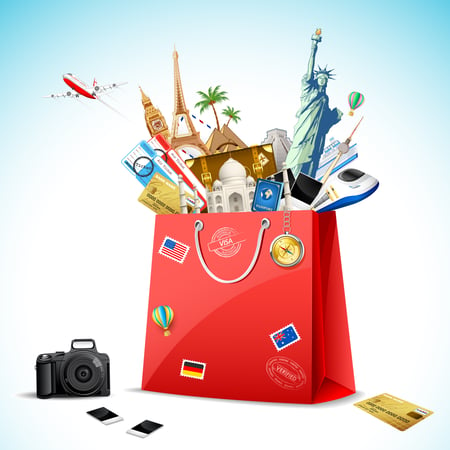 Like so many concepts in today’s global travel industry, the definition of luxury travel has changed. In the last five or so years, travelers - many of which are millennials or even younger - have made the move away from the posh hotels, lavish resorts, and all-inclusive nature of these bookings to a more unique, culturally experience when it comes to luxury travel. Not that long ago, a vacation to Mexico might have meant lazy days by the pool, surf lessons, and perhaps a guided tour of an open-air market not far from the resort. But today, with the rise and proliferation of social media, travel review websites, and mobile apps, luxury travel means leaving the hotel behind and experiencing the heritage and diversity of a destination through unique, individually-curated activities.
Like so many concepts in today’s global travel industry, the definition of luxury travel has changed. In the last five or so years, travelers - many of which are millennials or even younger - have made the move away from the posh hotels, lavish resorts, and all-inclusive nature of these bookings to a more unique, culturally experience when it comes to luxury travel. Not that long ago, a vacation to Mexico might have meant lazy days by the pool, surf lessons, and perhaps a guided tour of an open-air market not far from the resort. But today, with the rise and proliferation of social media, travel review websites, and mobile apps, luxury travel means leaving the hotel behind and experiencing the heritage and diversity of a destination through unique, individually-curated activities.
While this is an important development for travel agencies, travel management companies, and other major players across the value chain, it’s particularly relevant for tour operators in how they source and position tours and activities.
It’s no longer enough to simply work with major suppliers to offer static vacation packages whereby travelers are locked into various tours and activities with little or no association to the destination in which they’re visiting. Instead, tour operators have to go the extra mile to find products and services that give travelers a taste of their destination they’ll not soon forget.
With this in mind, here are a few ways in which the evolution of luxury travel has impacted how tour operators work.
Greater focus on local
Because the shift in luxury travel is away from giant, all-inclusive resorts and more toward the unique, once-in-a-lifetime experience, tour operators are now looking to work with more local or regional suppliers to source tours and activities. This means tour operators not only have an increased knowledge of the local tourism market and environment, it also means an emphasis on new and exciting partnerships with local suppliers tour operators can leverage for long-term growth and productivity. For example, in a shifting luxury travel market like Mexico, it may no longer make sense for a tour operator to work with a large, non-native supplier offering typical water-based activities like snorkeling or scuba-diving, but rather it has more value to work with a supplier who can provide guided hikes of historical landmarks very rarely offered in years prior.
Expanded technology platforms
To handle these new and additional tour booking options, tour operators have had to adopt new booking engines to ensure the availability and accuracy of bookings. It’s been well-documented the importance of updating static databases in order to avoid confusion or complications with travel arrangements, and adding new and expanded products and services to a tour operator’s is no different. Operators have thus been required to incorporate search and booking capabilities that allow for fast, accurate search results to provide enhanced insight and visibility into their overall supply situation. For example, tour operators in past years may have not had to worry about incorporating possible bookings for river tours in remote regions of a destination. However, in today’s travel landscape, luxury travelers desire such off-the-beaten path excursions that tour operators must now offer in order to remain competitive.
Embracing connectivity
We briefly discussed at the beginning of this entry how millennials and younger generations are driving the shift in luxury travel. With so many options for tour and activities available to today’s younger travel demographic, tour operators can no longer expect these travelers to seek them out - instead, tour operators must go to where this generation spends a majority of its time, and this means embracing a connected world. Mobile apps, online review sites, and social media are where so many of today’s younger travelers research and complete bookings. Tour operators looking to capitalize on attracting a new breed of luxury traveler have had to enhanced their connectivity through a robust, customer-facing online, mobile, and social media presence. While securing a larger segment of this important market share is an obvious value proposition, another is gaining important insights into the needs and desires of this younger generation in other areas outside of luxury travel. Essentially, embracing connectivity with luxury travelers can have a domino effect whereby tour operators can leverage this understanding to attract other types of travelers.
Today’s travel industry is full of complexity due to a variety of factors, and shifting consumer demographics is definitely one of the most interesting elements. Like so many other market segments of the travel industry, luxury travelers are pushing back against conventional bookings in favor of the unexpected, the unusual, and the new. Tour operators must respond with previously untested strategies in order to capitalize on these fluid demographics in the short, mid, and long-term.
















